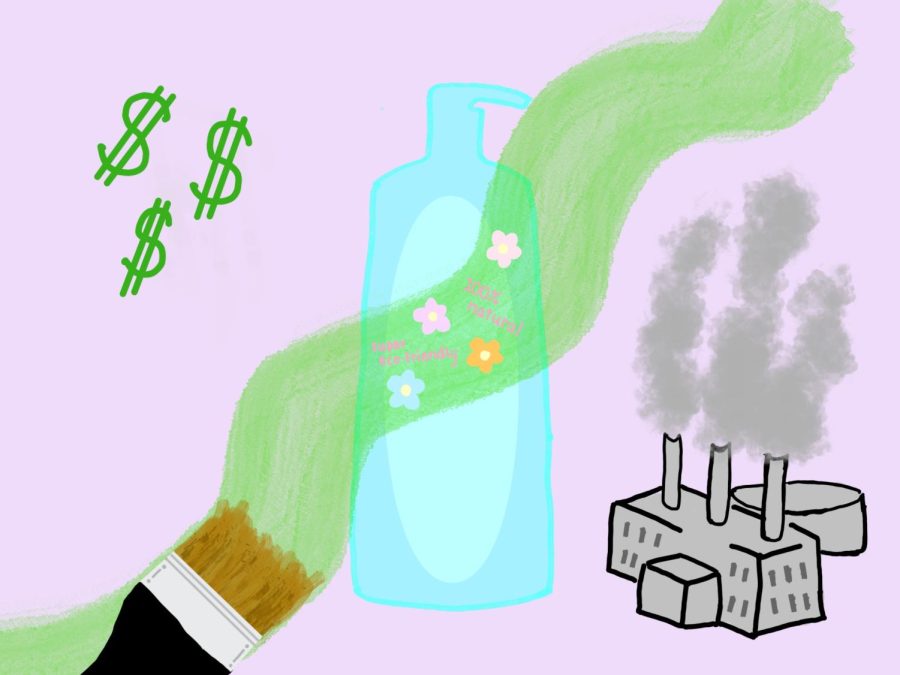What is greenwashing and how can we spot it?
Some companies take advantage of people’s growing concern for the environment by marketing their products to be more sustainable or eco-friendly than they actually are.
Although many companies recognize the significance of putting forth effort to combat climate change, there are many that are also not truly being as sustainable as they say. This is called “greenwashing”. Some companies establish what their sustainability efforts are; however, they do it more so for the purpose of marketing rather than protecting the environment.
The term greenwashing comes from Jay Westerveld, an American environmentalist, who included that term in 1986 when he wrote a paper. Prior, while he was surfing in Fiji on a research trip he noticed how a resort was requesting people to reuse their towels rather than grabbing a new one. However, he also recognized how the hotel was trying to become bigger with the lack of the nature around them. He found the hypocrisy in this, since the hotel was aiming to become more sustainable by encouraging customers to reuse more while also neglecting to protect the nature around them.
Some examples of companies that were accused of greenwashing include H&M and their fast fashion in Europe in 2021. The Changing Markets Foundation released a report in 2021 that found that 96% of H&M’s claims regarding sustainability were not solidly supported. In addition, there was a lawsuit opposing the Hefty Recycling Bags, a brand of trash bags that claimed they’re “designed to handle all types of recyclables”. However, based on the lawsuit, not only were the bags not recyclable, but they caused other material to not be recyclable anymore. Lastly, in 2015, Volkswagen was accused of greenwashing after they claimed they were using “clean diesel” engines. However, “the cars were releasing up to 40 times the permitted amount of nitrogen oxide pollutants”, according to Jumpstart.
To make sure the products you use are not being greenwashed, look out for the pictures and the meanings these products express, as a company may utilize a picture of nature to make it seem beneficial for the environment. Watch out for companies that produce sustainable products but hurt the environment, such as by polluting the air, in order to make them. Also, make sure to look into products that use general terms associated with their products such as “natural” and “eco-friendly” because you want to see the specifics of how they’re executing such terms.
It is important to not confuse the terms “greenwashing” and “green marketing”. Green marketing is when companies have the moral responsibility to act more sustainably and implement actions to lessen their detrimental impacts towards the environment. A company or business is considered to be greenwashing if they do green marketing but they do not actually incorporate sustainability as they claim to do so, do not serve the environment in general as they had marketed, etc. Some ways companies and businesses do green marketing is by lessening packaging usage, developing products that can be repairable, reusable, and/or recyclable, creating products from sustainable materials, and more.
Many people, whether it may be companies or people in our own neighborhood, are trying to become more sustainable to help lessen our harmful impacts on the environment. Thus, it is fundamental to also take a closer look behind some of our favorite and much utilized brands in our daily lives to see if they are being honest with their environmental values.

Ellie Noh is a sophomore and a Community editor for Eastside. Her passions include advocating for climate action and living sustainably. She is the co-founder...

